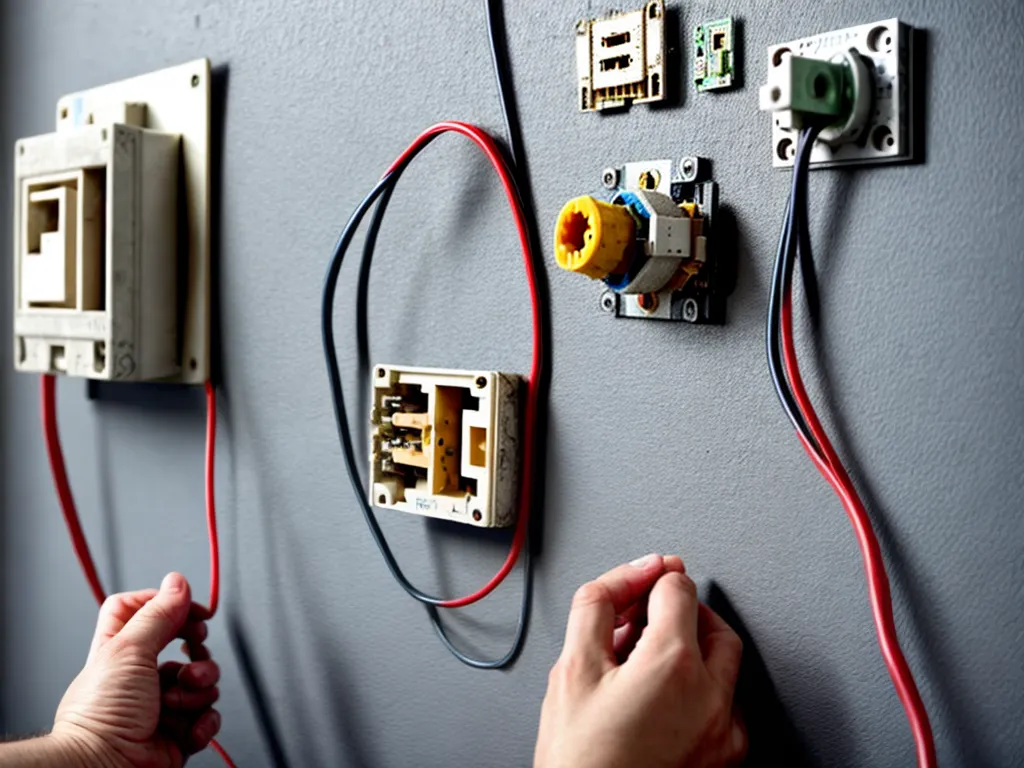
Home electrical projects can be daunting, especially when working with older, obsolete parts. However, with proper precautions, you can safely reuse many electrical components for DIY wiring projects. Here is a comprehensive guide on how to identify, evaluate, and install obsolete electrical parts in your home.
Evaluating Obsolete Electrical Parts
Before using old electrical parts, you need to carefully examine them to ensure safety and functionality. Here are some key steps:
Inspect for Damage
Carefully inspect each part for any signs of damage like cracks, burnt marks, broken pieces, etc. Any damaged part should be discarded and replaced.
Check Date and Rating Codes
Many electrical components like switches, outlets and breakers have date and rating codes stamped on them. Research to ensure the codes match the era of your home's electrical system. Mismatched parts can be unsafe.
Test with Multimeter
Use a multimeter to check for continuity, resistance, voltage handling capability, etc. Any part that fails these tests should not be reused.
Consult an Electrician
If unsure about the condition and capability of a part, consult a licensed electrician. They can accurately assess reuse feasibility.
Only use parts that pass inspection, code checks, multimeter tests and electrician approval.
Finding Compatible Obsolete Electrical Parts
To safely incorporate obsolete parts into home wiring, you need compatible ones suitable for your electrical system. Here are some sources to find such parts:
-
Salvage yards - Check local salvage/demolition yards and recycling centers for old electrical fixtures and wiring.
-
Online auctions - Search Ebay, Craigslist etc. for new old stock or gently used vintage electrical parts.
-
Estate sales - Keep an eye out for estate/garage sales selling old electrical equipment and components.
-
Specialty retailers - Some lighting fixture and hardware stores specialize in antique and reproduction electrical parts.
-
Manufacturer contacts - Contact manufacturers to check for availability of obsolete or replacement parts.
Ensure salvaged and reproduction parts are evaluated for safety before installation.
Safe Installation of Obsolete Electrical Parts
When ready to install old electrical parts in your home, follow these guidelines to ensure safety:
Upgrade Related Components
Replace associated wiring, switches, breakers with modern versions rated for the obsolete part's voltage/amperage.
Use Appropriate Connections
Make connections using suitably sized wire nuts, terminal blocks, etc. Avoid loose, frayed or improper connections.
Follow Codes and Permits
Get proper permits and have work inspected. Follow all electrical codes for layout and installation.
Add Safety Features
Incorporate fuses, GFCIs and AFCIs appropriately to protect against shorts, shocks and fires.
Label Live Parts
Clearly mark all live/hot wires and terminals to prevent accidental contact.
Never compromise on safety - address all risks before powering on obsolete electrical parts.
Examples of Obsolete Electrical Parts Reuse
Some specific examples of safely reusing obsolete electrical parts for home projects:
Vintage Light Fixtures
Salvaged 1920s sconces with Edison bulbs can be safely wired into a bedroom after replacing old cloth insulation, upgrading wires and adding in-line fuse.
Antique Doorbell System
A classic ringing doorbell mechanism can be installed at entryway by integrating a modern low voltage transformer and wiring.
Old Knob and Tube Wiring
Obsolete knob and tube wiring can be reused in workshop or shed circuits after running wires through modern conduit for protection.
Reclaimed Pull-Chain Lights
Vintage ceiling lights operated by pull-chain switches can be installed in basements or attics by integrating modern components like LED bulbs.
With due diligence, many obsolete electrical items can be adapted into safe, functional parts of a modern home electrical system.
Conclusion
While reusing obsolete electrical parts in DIY projects requires caution and care, it can be done safely. The key is thorough inspection, testing and integration with modern components. By leveraging used parts, you can save money while giving your home unique vintage accents. Just be sure to consult electrical experts whenever in doubt. With the right knowledge and precautions, you can wiring projects with old electrical parts!